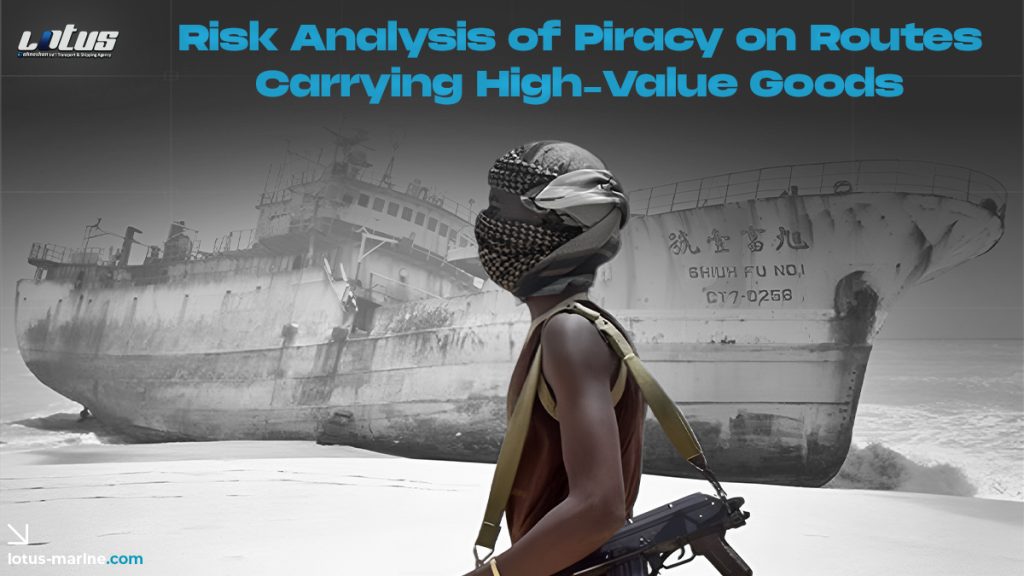Introduction
Maritime routes are the lifelines of international trade, facilitating the movement of high-value goods worth billions of dollars annually. However, piracy poses a persistent threat, particularly in regions where law enforcement is weak. Shipping companies must continuously adapt their strategies to protect cargo, crew, and operational efficiency.
Understanding Maritime Piracy
Piracy is defined as an act of robbery or criminal violence committed at sea. Historically associated with the “Golden Age of Piracy,” modern piracy has evolved into a sophisticated and organized crime targeting vulnerable vessels.
Key Regions Affected by Piracy
Gulf of Guinea
The Gulf of Guinea remains the world’s piracy hotspot, with incidents of armed robbery and hijacking on the rise. High-value goods, such as crude oil and consumer electronics, are frequent targets.
Southeast Asia
Straits of Malacca and the South China Sea are critical chokepoints where cargo theft and crew abductions occur.
Horn of Africa and Indian Ocean
Though piracy off the Somali coast has declined, sporadic attacks continue, threatening vessels in this high-traffic area.
Motivations Behind Piracy
Economic disparity and limited job opportunities in coastal communities often drive individuals to piracy. Weak governance and political instability exacerbate the issue, allowing pirate networks to operate with impunity.
Risks to High-Value Goods
High-value goods attract pirates due to their profitability in black markets. Incidents can lead to:
- Financial Losses: Theft of cargo worth millions.
- Supply Chain Disruptions: Delays in delivery impact businesses and consumers.
- Crew Safety Risks: Hostage situations put lives in danger.
Case Studies
Hijacking of MV Sirius Star (2008)
A Saudi oil tanker carrying $100 million worth of crude was seized by Somali pirates, demonstrating the vulnerability of high-value cargo.
APL Malaysia Incident (2020)
Pirates attacked the vessel in the Gulf of Guinea, stealing high-value electronics. The incident highlighted the ongoing risks in the region.
Factors Contributing to Vulnerability
Poor Surveillance
Inadequate monitoring systems make it easier for pirates to approach vessels undetected.
Inadequate Crew Training
Crew members unprepared for piracy threats are less equipped to handle attacks effectively.
Targeting High-Value Cargo
Pirates often identify vessels carrying electronics, luxury goods, and oil, which are easy to sell on illicit markets.
Technological Tools for Risk Mitigation
GPS Tracking and Real-Time Monitoring
Advanced systems track vessel movements and raise alerts in high-risk zones.
Automatic Identification Systems (AIS)
AIS improves situational awareness by sharing vessel location data with authorities.
Geofencing Technology
This tool alerts crews when vessels enter high-risk areas, allowing for quick evasive actions.
Role of International Collaboration
Efforts by organizations like the International Maritime Organization (IMO) and regional coalitions have significantly reduced piracy incidents. For example, the Shared Awareness and Deconfliction (SHADE) initiative enhances coordination among naval forces.
Best Practices for Shipping Companies
- Risk Assessments: Regularly analyze and avoid high-risk routes.
- Best Management Practices (BMP): Adopt industry-standard guidelines for vessel protection.
- Crew Training: Conduct piracy drills and awareness programs.
Economic Impact of Piracy
Piracy incidents increase shipping costs due to higher insurance premiums and the need for additional security measures. These expenses ultimately affect global trade and consumer prices.
Private Security Measures
Armed Guards
Deploying armed personnel onboard vessels deters potential attackers.
Secure Shipping Lanes
Using designated, patrolled corridors minimizes exposure to piracy threats.
Challenges in Combating Piracy
- Legal Complexities: Prosecution of pirates involves jurisdictional challenges.
- Resource Limitations: Many nations lack the resources to enforce maritime laws effectively.
Future Trends in Maritime Security
The future of maritime security includes:
- Drone Surveillance: Enhancing real-time monitoring of vast sea areas.
- AI-Powered Analytics: Predicting piracy threats through advanced data analysis.
Conclusion
The threat of piracy on routes carrying high-value goods is an ongoing challenge that requires a multi-faceted approach. By investing in advanced technologies, strengthening international collaboration, and adopting robust security measures, the shipping industry can safeguard its assets and ensure the continuity of global trade.
FAQs
Q1: Which regions are most affected by piracy?
A1: The Gulf of Guinea, Southeast Asia, and the Horn of Africa are major piracy hotspots.
Q2: How do pirates target high-value goods?
A2: Pirates often track vessels carrying electronics, luxury items, or oil, exploiting their high resale value.
Q3: What are some effective anti-piracy measures?
A3: Advanced technologies like AIS, armed guards, and risk assessment protocols are effective deterrents.
Q4: How does piracy impact the global economy?
A4: Piracy increases shipping costs, delays deliveries, and disrupts supply chains, affecting businesses and consumers.
Q5: What role does international collaboration play in combating piracy?
A5: Collaborative efforts like naval patrols and information sharing enhance maritime security and reduce incidents.







